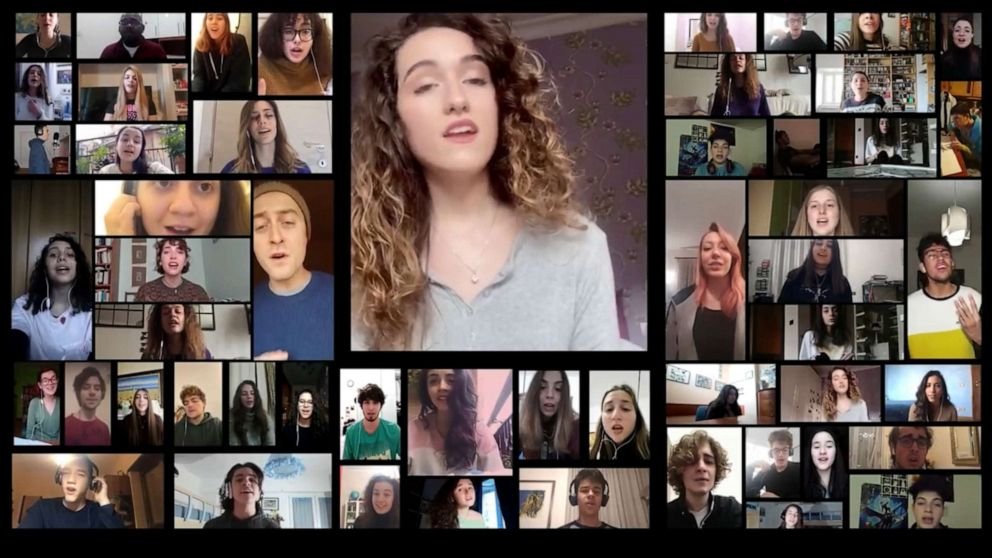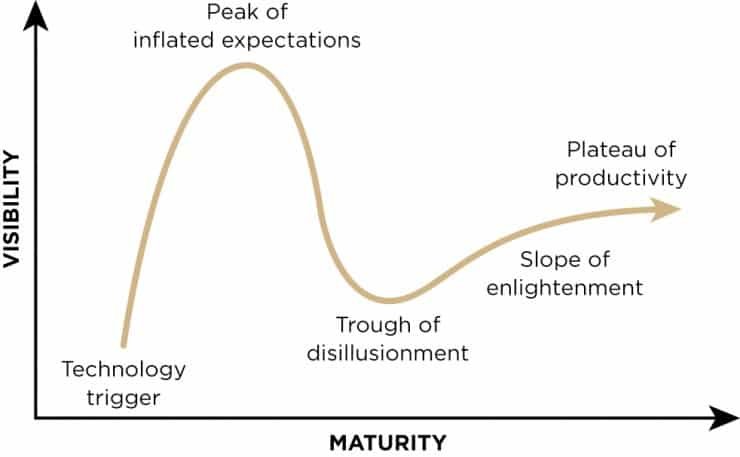Four Years Later: Lessons Learned
Believe it or not, it was four years ago today that a National Emergency was declared due to the global Coronvirus pandemic, and schools were shut down - many for an early “Spring Break”. Little did we know on March 13, 2020 what we were all in for. This pivotal moment in our history forever changed many things - the way we work (remote work), the way we order food (DoorDash, GrubHub, Uber Eats), the way we shop (online), and the way we teach and learn (Zoom, Google Meet, Teams, Flipgrid, etc.). Aside from the anxiety and fear that I was experiencing, I knew on that day that the tools and resources that we had built at MusicFirst could be a lifeline for music teachers around the world. We decided on that day to give away the MusicFirst Classroom to any teacher that requested it, not knowing that an overwhelming tidal wave of requests would be coming soon thereafter. We gave away over 500,000 accounts and tested the capacity of our servers right away. In order to make the giveaway fo our platform more effective, I decided to run a series of webinars from March 16th through the 20th for music educators to show how our solutions could be used to teach music effectively online. We had thousands of teachers sign up. Here is the first webinar of that series:
Many music teachers struggled to figure out how they could keep their music programs going when students couldn’t meet in person. It’s all but impossible to rehearse an ensemble over Zoom, and one of the most important facets of a music program is the sense of community that is established. Students want and need to be together to make music - it is a very powerful thing. Most music teachers were beyond anxious about what the next few weeks and month would mean for their programs, and even their careers.
We all know what happened next - many schools did not go back to any sort of in person instruction until months later. My own children learned from home until February of 2021 - and even then - only in a hybrid approach - going to school for in person instruction 2 days a week, learning remotely another 2, and completely asynchronous on one day. The hit to music programs was profound for many - losing 20, 30, 40% and more of the enrollment in their ensembles. Some music teachers decided to take early retirement, some decided to just try to keep a program to eventually come back to, but some teachers took on the challenge and reimagined what a music program could be. I have been advocating for the meaningful integration into music instruction since my first presentation at NJMEA in 1994. For 26 years, that was a bit of a struggle, with many music teachers being resistant to it - for whatever reason. On March 13, 2020 all of that changed. Technology became the lifeline for keeping music programs running, and almost every music teacher in the world had to figure out how to use the available tools to make their jobs possible.
At MusicFirst, we learned a lot over the next 4 years. And I thought I would take this occasion on a grim date in music education history to try to piece together what those lessons were and how they might impact the future of music education.
The Value of Personalized Learning
Because the delay caused by Zoom and other online meeting tools makes playing together in an ensemble all but impossible without some type of hardware device like RealTime Audio, we quickly pivoted to trying to cultivate the musician inside of each individual student. Focusing on things like technique, music theory, solo repertoire, sight reading, and small ensembles, music teachers found relevant tools that could work in a browser and be used by students to build those essential musicianship skills. At MusicFirst, our most popular tools for this skill set were PracticeFirst, Sight Reading Factory, Musition, and Auralia.
We heard from many of our customers that these tools really did improve the individual musicianship skills of their students, and the rare opportunity to focus on one student at a time - a luxury that we simply don’t have enough time for during a regular school year - really did help those students who decided to stick with it during the pandemic. Yes - many students dropped off, but for those who stayed, these tools helped them grow.
Every Student Has a Composer Living Inside Them
Many of our customers turned to digital audio workstations like Soundtrap to provide their students with a creativity tool. This was perhaps one of my favorite aspects of online learning during the pandemic. Because ensembles couldn’t meet in person and the majority of scheduled class time was now open to new things, music teachers saw first hand how powerful music composition tools like Soundtrap, Soundation, Flat and Noteflight could be. Many students used these tools without being assigned anything, creating their own beats and compositions that they composed either on their own, or within collaborative groups of students who used the features of the software to see and hear each other while they created music. Other music teachers used the collaboration feature in Soundtrap to have their students record themselves singing or playing music and then turning those recordings into those Brady Bunch style singing/playing heads videos that took so long to create. Remember those?
Popular Music Ain’t So Bad
Because traditional ensembles were not able to meet in person, many music teachers decided to dip their toe into the world of popular music. While organizations like Music Will and APME have been advocating for this for years, the pandemic was a unique opportunity to test out ways of incorporating popular music into the music curriculum. Many of our customers had their students create remixes, mashups and cover versions of their favorite songs. Kids did this on their own, too. Ukuleles were everywhere, often because recorders required removing masks to play, and once a student learned the main four chords that are used in most pop songs, they started posting their own versions on YouTube and TikTok.
Flexible Arrangements for Ensembles
Perhaps one of the coolest changes that I saw during the pandemic was that publishers realized that music educators may not have the instrumentation available to them that they used to have, and so they decided to solve the problem head on by inventing a new category - Flexible/Adaptable Instrumentation. When companies like JW Pepper add this new category to their vast catalogue - you know its something big. Music publishers like Excelcia Music Publishing, YourScore, CL Barnhouse, and many more immediately started offering arrangements that would work for any type of instrumentation. This new category was needed for a very long time - especially in smaller school districts and smaller music programs.
The Technology Hype Cycle is Real
The Gartner Hype Cycle is a phenomenon that is often seen when new technologies are released and adopted by the general public. This cycle has five distinct stages: the Technology Trigger (the launch of the product), the Peak of Inflated Expectations (we think that this technology will solve ever problem ever). the Trough of Disillusionment (we realize that those expectations were not everything we thought they would be), the Slope of Enlightenment (we realize that there is a lot of good stuff that actually can be done), and the Plateau of Productivity (the technology use case is fully realized and engrained into our lives). This hype cycle was exactly what happened with technology integration into the music classroom. The pandemic was the trigger, our early discovery and use of technology to make something happen in our classrooms was the peak, the fact that we realized that we weren’t going to be back for in person instruction anytime soon and that the technology tools were the only way we could connect on a long term basis led us to the trough, and once we were back to in person learning, many teachers just stopped using it altogether (that was the actual trough), and we are currently just coming out of the slope where technology integration has now a more considered and methodical approach rather than the panic buying of mid 2020. My sincere hope is that the technology immersion that we all had to go through just to be able to teach has taught us that there are some REALLY good tools out there that can significantly improve our students musicianship skills as well as nourish their creative spirits. Sales at MusicFirst have generally followed this hype curve as well, and I know that many other companies in the music tech space have experienced the same thing.
Empathy in Everything
I remember vividly begging teachers at my fist webinar on March 16th, 2020 to be empathetic to the students and their parents, and to make time for themselves for self care. One of the saddest things I saw during the early days if the pandemic on certain Facebook groups was music teachers slamming their students and their parents for not showing up to their class online. If we learned anything during the pandemic, at least for me, is that we must be empathetic human beings first and treat every student like we would want our own children to be treated. So many of our students were dealing with unimaginable circumstances at home. So were we! Giving students the benefit of the doubt was so necessary. For many teachers, myself included, just seeing the kids was enough. Remember lock down? Staying inside for days and weeks? Now that we are on the other side of the pandemic, I sincerely hope that the new found empathy towards our students continues. We have ALL been through a lot over the past four years. A lot. Kindness and understanding is in short supply in our daily lives. Providing that in our classrooms has never been more important.
So four years later, what have you learned? Think back to March 13th (which of course was a Friday) and remember what type of music educator you were then, and what type of music educator you are now. For me, I realize that being a teacher is an extremely important profession. Our students, my students turned to us for guidance and support when the world was turning upside down. Many just needed a place to come to speak with their peers about what they were experiencing. We needed that support too! I taught all of graduate courses at Teachers College Columbia University during the pandemic. Many students would keep their cameras off. At first I found it quite difficult to teach to a blank screen with little or no immediate feedback. But the students were there. And even if they didn’t want me to see them - for whatever reason - I know that they appreciated everything. At the end of every class the students would post emojis, wave, smile, and for the first time ever - thank me. I know its a little thing, but it meant a lot.
In my opinion, music education is now back in full force. I see it whenever I go to a school or a conference. Our numbers are back, the enthusiasm is there, and a new sense of community is obvious. All that I ask is that we all remember the tools that helped us through it, the tremendously positive effects that they had on individual musicianship skills and creative skills, and the incredible opportunities that it affords for things like assessment, learning, performing, and creating.






